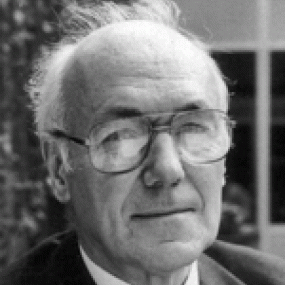Obituary - Dr David Christopher White

1926 to 2008
David Christopher White was born in Birmingham on 11th May 1926, the son of a Baptist minister. He went to Taunton School and later became a scholar of the City of Oxford School. He studied medicine at Westminster Hospital and undertook his national service in the Royal Air Force, specialising in the evacuation of casualties, attaining the rank of Acting Squadron Leader.
His subsequent career lay in anaesthesia, but with major involvements in research over a very long period. His driving forces were three-fold. First, he had a remarkable ability to pin point the unsolved problems of anaesthesia. Secondly, he brought to bear on these problems great powers of concentration, endurance and experimental ingenuity. Thirdly, he was extremely kind and helpful to many young trainees in anaesthesia, tirelessly guiding them through the intricacies of research.
His postgraduate training in anaesthesia started at the Westminster, and then he became Registrar, and later Senior Registrar, in Newcastle under Professor Pask. His first consultant appointment was in Hull (1960-1964) during which time he was an Honorary Research Associate in the Department of Zoology of the University of Hull. He then moved to Aberdeen as Clinical Lecturer and Consultant. There he established lifelong friendships and research affiliations.
While in Aberdeen, David made a discovery fundamental to the understanding of the mode of action of anaesthetics. His 1970 publication in Nature reported for the first time a reversible interaction between anaesthetics and a protein – in this case the bacterial enzyme luciferase. The light of luminous bacteria reversibly faded when they were exposed to anaesthetics. This seminal discovery changed the face of research into the mechanism of anaesthesia, and transferred the target for their action from lipids to proteins.
In 1970, he came to the newly built Northwick Park Hospital, in which was the Clinical Research Centre of the Medical Research Council. Thereafter, his time was divided between the NHS and the new MRC Division of Anaesthesia.
His later research, mainly into methods of delivery of anaesthetics, continued unabated for an exceptionally long time. From 1962 until 1998, he published 41 major peer-reviewed publications, plus 27 abstracts of presentations to learned societies, and also 21 invited chapters to text books of anaesthesia. He remained an active member of the Anaesthetic Research Society, regularly presenting papers until shortly before his death. However, his research never interfered with his being an outstanding clinician and, for many years, Head of the NHS Division of Anaesthesia at Northwick Park Hospital,
His death on 23 August 2008 was sudden and unexpected. He will be greatly missed by many colleagues throughout the United Kingdom, and by his wife Gillian and his two children Elizabeth and Harry.
John Nunn
16 September 2008
